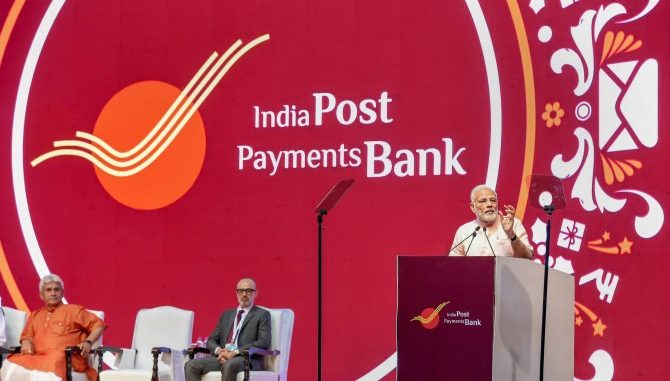
By Anil Padmanabhan
The ecosystem for Bharat is poised for a fundamental makeover—at least, once the objective of universal financial inclusion is achieved
Little over a fortnight ago, the India Post Payments Bank (IPPB) was launched. Yes, on the face of it, IPPB is just another addition to an already overcrowded space. Actually, it is much more; or at least the underlying potential: it will be another institution to take banking to Bharat (what economic jargon defines as enabling financial inclusion in rural India).
At the moment, according to data quoted in a financial inclusion surveyconducted by the National Bank for Agriculture and Rural Development (Nabard) and released last month, despite the massive push under the Jan Dhan Yojana, about 190 million adults or approximately 40 million households are still unbanked.
Bringing them into the institutional framework of the formal economy is daunting, no doubt, but realising the potential will be a real game changer for rural India. At the least their entry into the formal economy will create a credit history for individuals and households. It is key, as is being discovered by agencies mining such data, to fund working capital loan requests in urban India.
For long, Bharat, or that part of India largely denied the benefits of growth despite being the largest votebank, has due to the lack of this institutional support been forced to fend for itself by leaning on usurious money lenders. Changing needs of Indian agriculture as it embarks on the value added route and mechanization has only forced up credit demand from such informal resources—disproportionately increasing the risk of sliding into a debt trap.
Part of the reason is also the fact that the existing institutions have dealt with the credit needs of rural India without understanding their peculiar behavioural characteristics—defined to a large extent by the inbuilt volatility and seasonality of farming.
Results of a 10-year-long project, Kshetriya Gramin Financial Services(KGFS) funded by the Chennai-based IMFR Trust, confirms this fact.
In a recent post on the blog maintained by Dvara Trust, Bindu Ananth, points out that KGFS deliberately adopted a wealth management approach to customer acquisition which begins with the customer and recognising her unique needs rather than the traditional product sales-led approach. One of the positive outcomes of the customised approach adopted by KGFS, as Ananth points out, is an improvement in their risk-taking capacity, which in turn encouraged self-employment and more investments towards business activities.
“As I think about these product experiments, I remain convinced that customer demand is certainly not the issue,” she added.
This observation is significant. Because the popular perception is that rural India in general and the farmer in particular can be overwhelmed by complex financial products which their urban counterparts may embrace.
Undoubtedly, a misplaced perception, as new studies—like the one by KGFS—reveal.
For instance, the same Nabard survey cited earlier points out that more than one in two adults residing in rural India exhibited sound financial behaviour. Yet only one in 10 were assessed to possess good financial literacy. Clearly, a supply-side solution is waiting to happen.
This is why the India Posts initiative to set up a payments bank is significant. It will be employing the iconic postman, who has over the years developed personal familiarity with rural households and will therefore, unlike strangers, enjoy a trust advantage.
The idea of doorstep delivery of services, like the one being attempted by the Delhi government, would further accelerate disintermediation in the delivery of public services and reinforce this special relationship with the postman and consequently IPPB.
Especially since one of the functions of the payments bank is to provide access to third-party financial services such as insurance, mutual funds, pension, credit products and forex—all of which are crucial in creating a wealth management culture to smoothen out the spikes in credit needs which inevitably create circumstances for a debt trap.
In the final analysis, it is clear that the ecosystem for Bharat, which is already witnessing change, is poised for a fundamental makeover—at least, once the objective of universal financial inclusion is achieved.
Source: Livemint

Leave a Reply